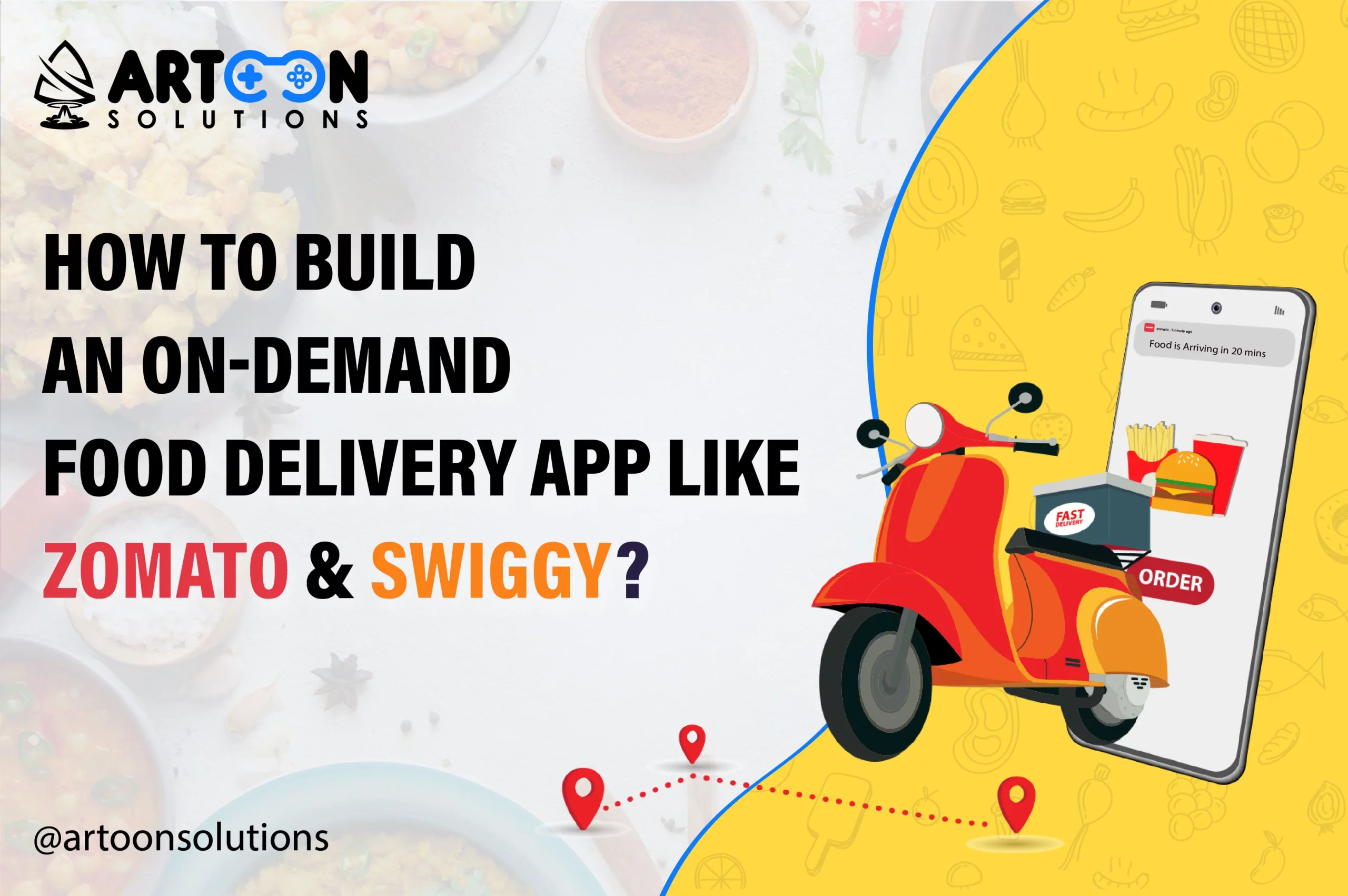- HR:+91-879-9184-787
- Sales:+91-832-0329-068

On-demand food delivery app development services have ensured everyone gets their desired food regardless of time and place. On-demand food delivery app development has become a trending topic. The on-demand food delivery app like Swiggy has streamlined the delivery process and eased how people get to their preferred restaurant. The food delivery app is helpful to customers and business owners, considering its global impact. With food delivery apps like Zomato & Swiggy, one can find different restaurants and order food within a specified time duration.
With the help of online food delivery apps, we can have delicious food delivered right to our doorstep with just a few taps on our smartphones. Two of the most popular on-demand food delivery apps are Zomato and Swiggy, which have gained immense popularity and success in the market. If you are planning to build an on-demand food delivery app like Zomato or Swiggy, this article will guide you through the process, from understanding the market to launching your app.
Before diving into the development process, it’s crucial to understand the on-demand food delivery app like Swiggy Market. Analyzing the market trends, competition, and target audience will help you identify opportunities and create a unique selling proposition for your app.
Research the existing players in the market, including Zomato and Swiggy, to understand their strengths and weaknesses. This will enable you to position your app effectively and offer something different to attract users.
Read More: How to Build a Food Delivery App Like Uber Eats
Now, let’s explore the step-by-step process of an on-demand food delivery app development:
Conduct thorough market research to identify your target audience, market trends, and competition. Analyze user preferences, market gaps, and potential opportunities to differentiate your app from existing players.
Understand the demographics, preferences, and behavior of your target audience. This will help you tailor your app’s features, design, and marketing strategies to attract and retain your ideal users.
Selecting the right technology stack is crucial for the success of your app. Consider scalability, security, and compatibility factors while choosing the front-end and back-end technologies, frameworks, and libraries.
Create an intuitive and visually appealing user interface that ensures a seamless user experience. Pay attention to color schemes, typography, navigation, and overall aesthetics.
Develop the front-end and back-end of your app using the chosen technology stack. Focus on creating a responsive, fast, and reliable app that can handle high user traffic and deliver a smooth performance.
Integrate secure and popular payment gateways to facilitate smooth and hassle-free transactions for your users. Ensure that the payment process is seamless and supports multiple payment options.
Implement location tracking and real-time order tracking features to give users accurate information about their orders. This helps build trust and transparency, enhancing the overall user experience.
Thoroughly test your app for bugs, usability issues, and performance glitches. The app must undergo rigorous testing mechanisms such as manual and automated testing to ensure a high-quality and error-free app before its launch.
Once your app is tested and ready, launch it on the app stores. Optimize your app’s description, screenshots, and keywords to improve its visibility and attract organic downloads. Plan a robust marketing strategy to promote your app and reach your target audience.
You must incorporate key features that enhance the user experience to build an on-demand food delivery app. These features include:
Read More: Benefits of Having Food Delivery App For Restaurant Business
There are several monetization strategies you can adopt for your on-demand food delivery app:
Invest in effective marketing and promotion strategies to ensure the success of your on-demand food delivery app. Some key tactics include:
Read More: Features and Benefits of Food Delivery App Development Models
Developing an on-demand food delivery app like Swiggy can be rewarding, but it comes with its own set of challenges. Some common considerations include:
The on-demand food delivery app like Swiggy industry is constantly evolving. Some future trends to watch out for include:
Building an on-demand food delivery app like Zomato and Swiggy requires careful planning, market research, and a user-centric approach. By incorporating the right features, choosing the appropriate technology stack, and implementing effective marketing strategies, you can create a successful app that meets the needs of your target audience.
Are you planning to build a food delivery app? You are in the right place then. Artoon Solutions is an established mobile app development company boasting over 14+ years of experience with 200+ qualified in-house experts.
Contact Us Now!
Yes, you can. One of the advantages of custom food delivery app development is the ability to customize the features and design according to your specific requirements and branding. You can work closely with the app development team to incorporate unique elements, tailor the user interface (UI), and create a seamless user experience that aligns with your business goals and target audience.
While having partnerships with restaurants can enhance the user experience and provide a broader range of food options for your app, it is not always necessary to have partnerships before launching your app. You can start by onboarding a few popular restaurants in your target area and gradually expand your partnerships as your user base grows.
Ensuring the security of user data is of utmost importance in any app, especially for on-demand food delivery apps that deal with sensitive information like personal details and payment data. To ensure data security, you can implement measures such as using encryption protocols for data transmission, secure and PCI-compliant payment gateways, and following best practices for data storage and access control.
The minimum cost for a Food Delivery App in India is USD 15,000 with basic features & functionalities. Depending on customization and premium features, the cost of the Food Delivery App Development may vary.
Copyright 2009-2024
